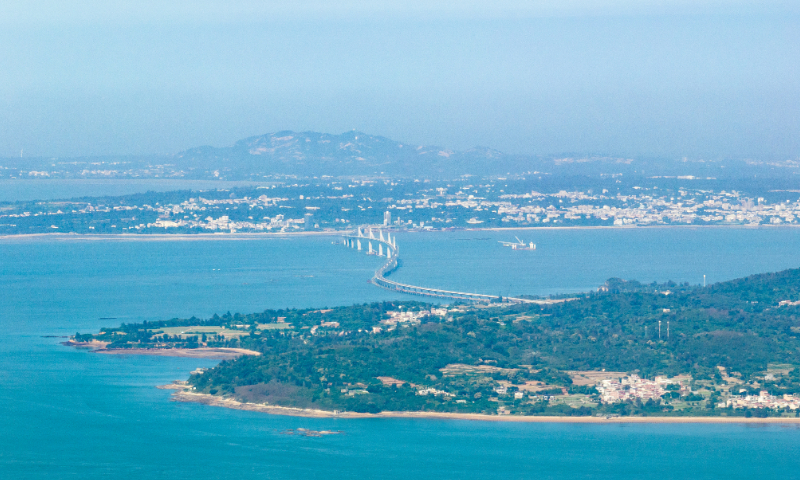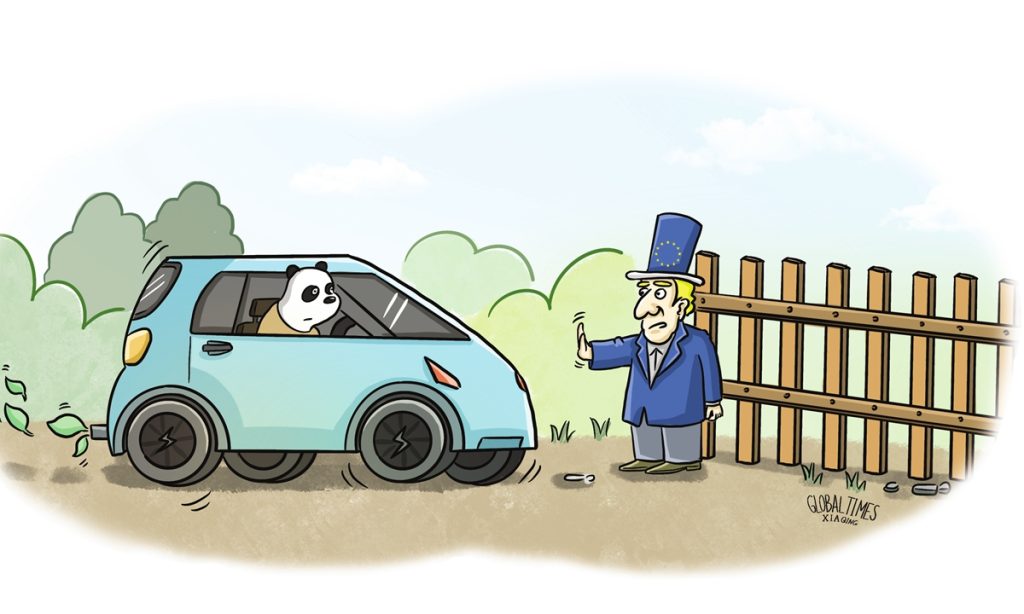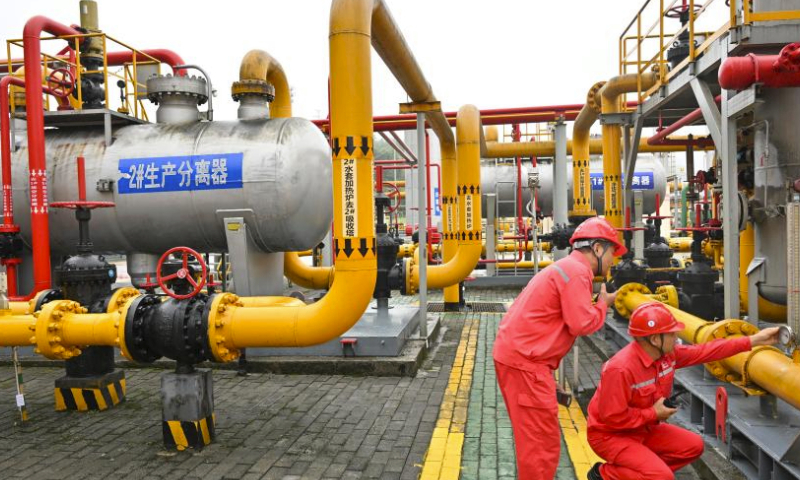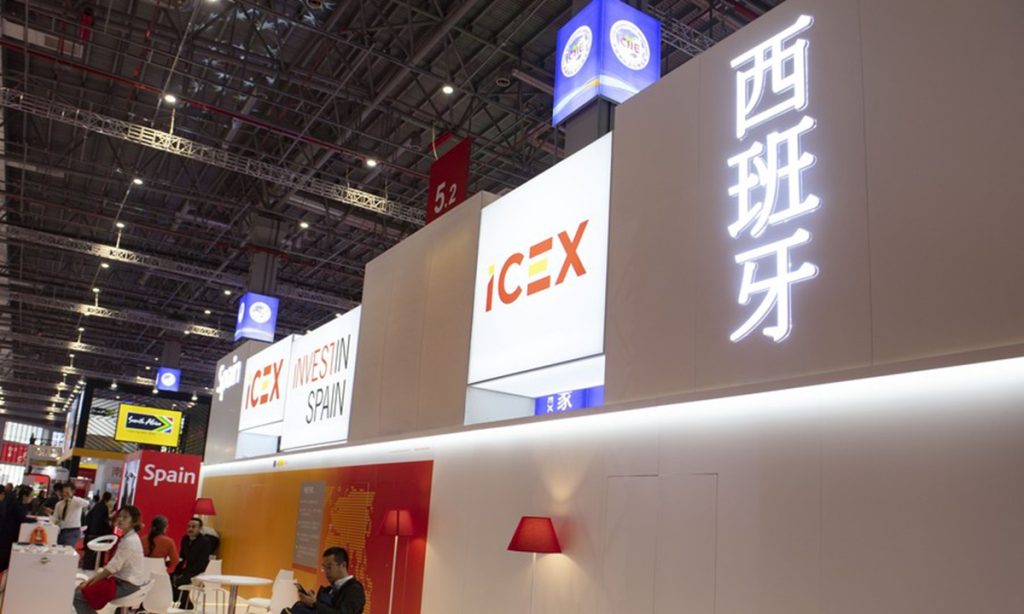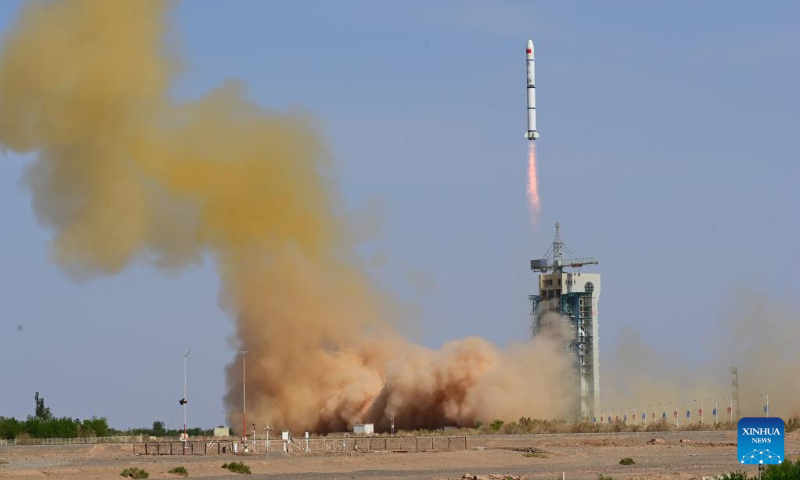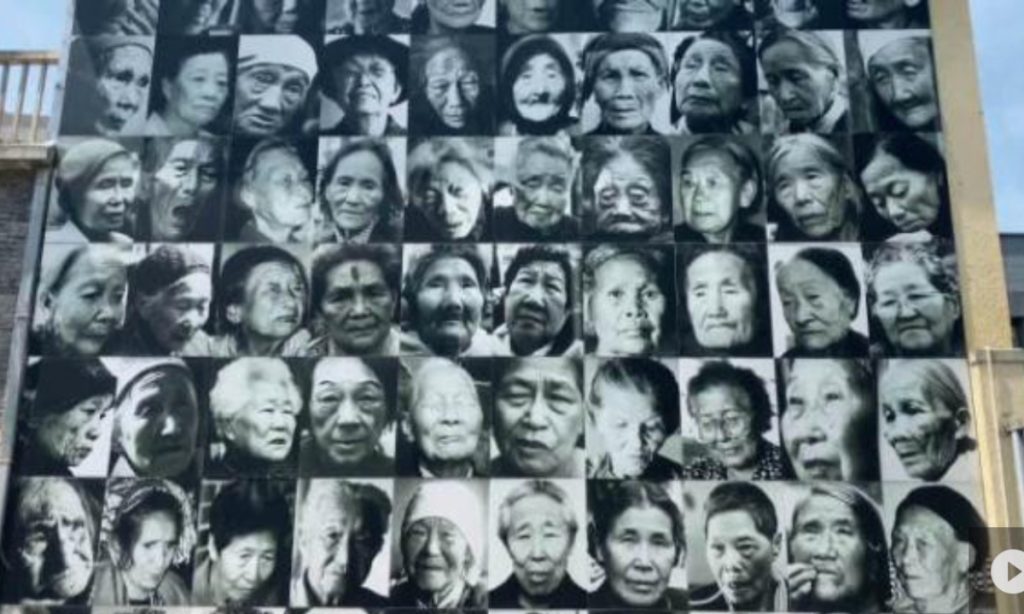GT investigates: 30,000 plus Xinjiang-related stories expose how certain Western media fabricate, hype up ‘forced labor’ smear

Editor's Note:
"Cognitive Warfare" has become a new form of confrontation between states, and a new security threat. With new technological means, issues are planted and disinformation spread so as to change people's perceptions and thus alter their self-identity. Launching cognitive warfare against China is an important means through which Western anti-China forces attack and discredit the country. Under the manipulation of the US-led West, the "China threat theory" has continued to foment.
Certain politicians and media outlets have publicly smeared China's image by propagating the "China's economic collapse" theory and "forced labor in Xinjiang" fallacy in an attempt to incite and provoke anti-China reprisals among people in certain countries. These means all serve the evolution of the US' covert China containment strategy in a bid to maintain its hegemony.
The Global Times is publishing a series of articles to systematically reveal the intrigues of the US-led West's cognitive warfare targeting China, and expose its lies and vicious intentions, in an attempt to show international readers a true, multi-dimensional, and panoramic view of China.
This is the fourth installment in the series. In this installment, we invite Tuersun Aibai, an expert from the School of Journalism and Communication at Xinjiang University, to share his thoughts on and analysis of the long-term "forced labor" smear campaign by certain Western anti-China forces, with the aim of defaming the Xinjiang region through tens of thousands of groundless, biased news stories.
In recent years, anti-China forces in the West have hyped up the so-called forced labor narrative, an accusation to systematically vilify China, as an attempt to tarnish the country's image on the international stage, weaken its international reputation, and alienate the nation by jeopardizing its friendly and cooperative relations with other countries.
In order to understand the political and economic motives behind their "forced labor" fallacy, as well as the exploration of the narrative's manipulation strategies, transmission paths, and methods of the fallacy, I conducted a statistical analysis of over 30,000 Xinjiang-related stories from 22 media outlets in 15 countries and regions.
From these, I selected 189 pieces published by 13 media outlets that spread the "forced labor" slander for further analysis and found out that the claim of "forced labor" concocted by anti-China forces in the West is a new discourse pattern and narrative framework, which has gradually evolved from the framework of early public opinion manipulation, into a comprehensive economic blockade and repression of Northwest China's Xinjiang Uygur Autonomous Region.
How 'forced labor' smear grows
Based on the analysis of 189 stories published by 13 overseas media outlets, I found that the evolution process of the "forced labor" smear campaign can be divided into three phases.
The first phase is a "topic brewing period" that spanned from December 2018 to March 2020.
In December 2018, the Associated Press (AP) first claimed that a company in Xinjiang's Hotan city had cooperated with local education and training program institutions to sell clothes made by the program's trainees to the US. The story was later quoted by many overseas media outlets and caught the attention of the US government, which in turn required that certain clothing and outdoor recreation product brands such as Adidas inspect their industrial chains, and enforced a prohibition of the importation of so-called forced labor products.
On December 18 that year, Voice of America (VOA) published a story titled US Sportswear Traced to Factory in China's Internment Camps, in which it alleged that Chinese government was "forcing some detainees to work in manufacturing and food industries." Two days later, VOA published a second article titled US Reviews Report of Imports from Forced Labor in China Camp, quoting several infamous Xinjiang separatists as stating that there was "forced labor" at Xinjiang's vocational education and training centers. Other mainstream US media sources such as The New York Times (NYT) also published similar stories with incendiary claims that month.
During that period, claims of "forced labor" were introduced by US media outlets as fodder for a new anti-China topic of focus, and its transmission scope was mainly within the US and its media sources. The claim only served to attack the trainees working at the clothing industry in the region after receiving vocational education.
The second phase of the West's "forced labor" smear campaign, a "topic fomentation period," spanned from March 2020 to December 2021.
On March 1, 2020, the Australian Strategic Policy Institute (ASPI), a think tank reliant on US defense funds and is keen to concoct and amplify various anti-China topics, released a "research report" titled Uygurs for sale 'Re-education,' forced labor, and surveillance beyond Xinjiang. The ridiculous report attacked China's efforts in accelerating Xinjiang's development, and slandered the employment placements of trainees from Xinjiang's vocational education and training program. Western media outlets later widely referenced and quoted the report.
By further fueling the "forced labor" narrative, some so-called "human rights groups" and media outlets called on governments in Western countries such as the US and the UK to investigate the industrial chains and asked local enterprises to cut ties with their Chinese counterparts that use Uygur labor.
In March 2020, Switzerland's Better Cotton Initiative (BCI) proposed that some major clothing brands ban the use of Xinjiang-sourced cotton using the groundless "forced labor" accusations as a pretext, claiming that the production cotton in Xinjiang "violated labor rights," and "violated human rights." Following this call to action, certain US congressmen introduced the so-called "Uyghur Forced Labor Prevention Act (UFLPA)," which required companies to obtain certification from the US government that any product imported from Xinjiang into the US was not produced with the use of "forced labor." The bill also required the US president to "identify and designate" visa or financial sanctions against any foreign person who "knowingly engages" in the "forced labor" in the Xinjiang region.
The "forced labor" fallacy continued to grow in the European Union (EU). In December 2020, the European Parliament passed a resolution on Xinjiang, falsely alleging the use of "forced labor" in the region. It required EU member countries to impose sanctions on Xinjiang officials and boycott so-called "forced labor" products from Xinjiang.
During this period, the scope of the "forced labor" smear campaign had further expanded, and some Western governments introduced related bills to "legally" base their "forced labor" accusations. The smear campaign targeted not only the employment of surplus rural labor in Xinjiang, but also extended to more industries in this region such as tomato cultivation in the agricultural sector and the photovoltaic and solar energy product manufacturing industries.
Legislatures, judiciaries, border defense, and the commerce departments of some Western countries banded together to form a community of mutual interests in this smear campaign. Western media sources, NGOs, think tanks, and enterprises also followed suit, cooperating closely with governments from the public opinion and "academic" standpoints.
The third phase, which started from January 2022 and is currently ongoing, is the "instrumentalization and politicization period."
Sample analysis based on media coverage suggested that the focus of media outlets in most countries has shifted to the "force labor" fallacy, while the US and the UK conversely remain focused on actively hyping up the fallacy. Data showed that eight US- and UK-based media outlets published a total of 24 stories attacking Xinjiang between January and April in 2022.
In this phase, the "forced labor" smear campaign entered a new "practice stage," serving the West's goals of escalating the economic suppression of China by indiscriminately attacking all the products made in Xinjiang and all the enterprises in the region.
Worse still, with the Xinjiang-related "bills" coming into effect, anti-China forces in the West have completed the transition from public opinion attacks, to the introduction of legislative economic sanctions. Now the public opinion campaign has turned into an economic war waged against China. The "forced labor" fallacy has become an integral part of the Western anti-China forces' strategic containment of China.
Tactics of public opinion manipulation
The "forced labor" fallacy did not emerge accidentally. Thanks to a long-term planned process and a clear manipulation strategy of public opinion by Western anti-China forces, who, prey on different countries' perceptions of the human rights concept to create and hype up lies under the guise of "protecting human rights," the fallacy gained momentum.
The concept of human rights is regarded as a value deeply influenced by the historical and cultural traditions of different countries. There are both commonalities and differences in the understanding of human rights among countries. Therefore, the UN's Universal Declaration of Human Rights, as well as the European Declaration of Human Rights, do not specifically give a universal definition of the standards of human rights.
Since the founding of the People's Republic of China, the Chinese government has regarded the rights to subsistence and development as fundamental human rights, fully protected the political, economic, social, and cultural rights of the people of all ethnic groups, and continuously promoted and elevated the development of human rights work in practice. China has written human rights protection into the country's Constitution and the Constitution of the ruling Communist Party of China (CPC), and further promoted the systematization and legalization of human rights protection. China has also held human rights forums and issued a white paper to comprehensively elaborate its concept of human rights.
However, the anti-China forces in the West, who ignore the differences in human rights concepts between China and the West and China's achievements in the protection and promotion of human rights, politicize, weaponize, and instrumentalize the concept of human rights by employing the "forced labor" fabrications and hype.
Some biased western media sources, by citing misleading quotes, wantonly attack the human rights situation in China, so as to promote the spread of the "forced labor" accusation by employing several tactics.
Tactic one: 'Criminalize' Chinese government
The "forced labor" accusation falsely alleges that the purpose of the transfer of the employment policy in Xinjiang region is to "strip" Uygurs of their cultural identity and "assimilate" them. Western anti-China forces have further fabricated lies claiming that China committed so-called "crimes against humanity" and "crimes of genocide" in the region.
For instance, on March 2, 2020, an Australian Broadcasting Corporation (ABC) article quoted an ASPI researcher as saying that the goal of the labor transfers was "political," with an aim toward the "stripping of their unique culture and identity." On November 25, The Global and Mail cited some infamous anti-China "human rights groups" that "Uygurs and other Turkic minorities have been subject to forced labor as part of China's plan to control the Uygur population in the region." On August 23, 2021, the Washington Post quoted an anti-China group's statement as saying that "no American corporation should be doing business in a region that is the focal point of a campaign of genocide targeting a religious and ethnic minority."
The reality is that, the Uygur population has increased from 3.61 million in 1953 to 11.62 million in 2020, an increase of over three-fold, while the Chinese national population growth rate over the same period only grew two-fold. The growth rate of the Uygur population has been higher than the national average.
Tactic two: Demonizing China's poverty alleviation policies
For instance, on June 24, the Washington Post groundlessly claimed that a Chinese company "recruits and employs Uygurs and other minorities via state labor programs that aim to place them in factories." On March 7, CNN quoted a British scholar as saying that the job programs in Xinjiang "are often non-consensual, and people who refuse can be punished with internment."
Contrary to the lies and rumors they fabricated, the fact is that workers of all ethnic groups in Xinjiang region, including those who were transferred for employment and those who had completed their studies in learning institutions and training centers, have the agency to choose their preferred jobs and regions of placement. They sign labor contracts and receive remuneration in accordance with the law, and enjoy various social insurance benefits.
The total number of rural migrant workers in China reached 30.7 million in 2021, of which 3.2 million were from Xinjiang. With an increase in the number of stable employment, the economic income of the people of all ethnic groups in Xinjiang has continued to increase, and the regional per capita gross domestic product (GDP) had increased from 45,476 yuan ($6,225.9) in 2017 to 53,593 yuan in 2020.
Tactic three: Stigmatizing assistance measures for transfer employment
The "forced labor" smear campaign claims that the Chinese government assigns staff to "monitor" Uygur employees, and even defames the existence of administrators of ethnic and religious affairs for Uygur employees at local companies, terming it as "monitoring."
On April 27, 2021, The Guardian quoted a member of an Australian anti-China group as saying that Uygurs were "held in secure compounds, working extremely long hours and under constant surveillance, and with political indoctrination as part of their daily routine." On March 9, 2020, a Washington Post article even ridiculously described the psychological counseling rooms as having been set for the purpose of thought policing Uygur employees.
Such psychological rooms, far from solely being found in Xinjiang, are part and parcel of many Chinese and foreign enterprises to help relieve psychological pressure experienced by employees. This is a common international practice. In November 2019, Chinese authorities issued the Specification of Healthy Enterprise Construction (trial), which requires employers to attach importance to their employees' physical and mental health, and encourages enterprises to set up mental health counseling rooms.
Tactic four: Distorting service work for labor transfer employment
On March 2, 2020, ABC quoted an ASPI researcher and separatist as saying that Uygur workers "are often transported across China in special segregated trains," and "authorities and factory bosses continue to closely monitor them." On April 27, 2021, The Guardian claimed that Uygurs employees "have limited or no communications with their families; mothers have been separated from their babies and families have been torn apart," citing the words of an anti-China separatist.
China fully protects the legitimate rights and interests of workers of all ethnic groups in law, policy, and practices, which advocate equal pay for equal work without discrimination against any ethnic groups. Chinese laws expressly stipulate that Uygur people enjoy the same rights as other ethnic groups, and Chinese enterprises have no right to and nor should they restrict their freedom.
Chinese citizens enjoy freedom of religious belief, and the state guarantees normal religious activities. Uygur employees participate in religious activities on the premise that they abide by China's laws and regulations, the enterprise's rules, and normal work routines.
Tactic five: Attacking China by citing misleading, tendentious claims
Based on my analysis of 189 stories from 13 media outlets, I found that when hyping up the "forced labor" smear, overseas anti-China media sources mainly cited "research report" published by the ASPI and anti-China scholar Laura Murphy, and the remarks of the separatist organization "World Uyghur Congress" along with its affiliated bodies.
A considerable number of their Xinjiang-related stories cited anti-China politicians and scholars to support their narratives, lack field research and first-hand information. The stories did not provide any reliable information, let alone contain actual interviews conducted with Uygur employees.
For example, in the article Canadian watchdog asked to probe allegations that imports made with forced labor in China published on April 11, 2022, The Globe and Mail quoted an "executive director" of a so-called "Uygur rights advocacy project" based in Ottawa as saying that he hopes a probe will drive Canada to take greater action against imports made using "forced labor."
Obviously, some Western media outlets achieve their goals of misleading their audiences and spreading fallacies by unilaterally quoting false statements made by some anonymous and anti-China sources, and using sensational and biased headlines. Their stories and quotes, without investigating the actual situation on the ground in Xinjiang region, lack verifiability. The information they convey in their stories is full of malicious speculation and lies.
Western anti-China forces concocted the "forced labor" fallacy as a means to serve their goal of suppressing China's economic development. To clarify the lies and show the world a real Xinjiang, China should make more efforts in several aspects, such as focusing on the international communication with the Arab world and developing countries, strengthen the public dissemination of accurate information, while also paying close attention to the slanderous tactics employed by anti-China forces to defame China.

